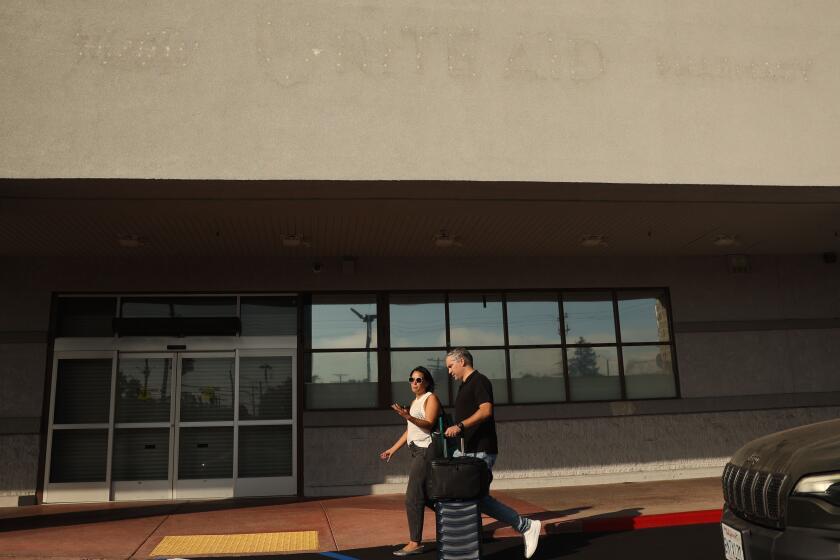Boeing steps up response to criticism after fatal Lion Air crash
Boeing Co. pushed back on suggestions that it could have better alerted airlines to a new anti-stall feature in the 737 Max jetliner involved in a fatal Indonesia crash, and it canceled a Tuesday call with carriers during which it had planned to discuss the model.
“You may have seen media reports that we intentionally withheld information about airplane functionality from our customers. That’s simply untrue,” Boeing Chief Executive Dennis Muilenburg wrote in a message to employees. “The relevant function is described in the Flight Crew Operations Manual and we routinely engage with our customers about how to operate our airplanes safely.”
Muilenburg was disputing criticism from U.S. pilot unions and a Wall Street Journal report that Boeing deliberately withheld a description of the obscure flight-control system that sometimes can pitch the aircraft’s nose downward if it suspects the plane is losing lift on its wings.
Boeing scrapped a conference call with Max operators that had been slated for Tuesday morning, said people familiar with the situation, who asked not to be identified discussing a private matter. They said they expected the call to be rescheduled. The plane maker has held several similar sessions to answer customer questions since the Lion Air tragedy, one of the people said. Boeing declined to comment about the call.
Boeing is working to shore up confidence in its top-selling jetliner and contain critiques stemming from the deadly Lion Air crash last month. Investors have fretted about liability for a system that possibly was tripped up by a single bad sensor reading — as well as the damage to the 737 brand, Boeing’s largest source of profit.
The shares dived as much as 7.6% Tuesday morning before recovering most of that loss. They closed down 1% at $317.70.
They have sunk 11.6% since the Oct. 29 accident involving a 2-month-old aircraft.
The canceled call had been intended to let Boeing field queries all at once from airlines worldwide that fly the Max, instead of having individual conversations on the same points, one of the people familiar with the situation said. The Chicago plane maker was also set to go over differences between the Max — which is the most recent version of Boeing’s bestselling airplane — and the model that preceded it.
CNBC earlier reported that the call had been canceled, and the Air Current newsletter first reported on Muilenburg’s message to employees.
Anti-stall feature
Airlines have been eager for details about the little-known anti-stall feature of the Max that has emerged as an area of focus for investigators as they try to figure out what caused Lion Air Flight 610 to crash into the Java Sea near Jakarta. Southwest Airlines Co., American Airlines Group Inc., Norwegian Air Shuttle ASA and United Continental Holdings Inc. are among carriers flying the Max.
Before the accident, Boeing hadn’t widely disclosed that the Max’s new anti-stall feature — called the Maneuvering Characteristics Augmentation System, or MCAS — would, in limited circumstances, lower the jet’s nose without any input from pilots.
In a previous bulletin to operators, Boeing maintained that the pilots already had been trained to respond to that behavior by the plane, a view echoed by United’s pilot union in a Nov. 16 statement. Muilenburg’s comments to employees highlighted a disagreement over the role of the manuals.
The three largest U.S. pilot unions have voiced concern over what they said was a lack of information about the MCAS.
Existing procedures
There’s no specific reference to the MCAS in the Boeing pilot manual used as the basis for how airlines document the aircraft, according to a memo Southwest Airlines wrote to pilots Nov. 10.
Yet neither is there any indication that Boeing hid the system from pilots or regulators, said people familiar with reviews of its operation since the accident. The flight manuals don’t include technical details about every aircraft system. Because the MCAS was designed to operate only in extreme conditions that pilots should only rarely experience, a decision was made that it wasn’t necessary to include a reference to the system, said the people, who asked not to be named because they weren’t authorized to speak about the issue.
The Boeing manual was intended to provide pilots with responses to every possible aircraft behavior. Even if the MCAS isn’t specifically mentioned, 737 pilots are drilled in how to respond if the plane is commanded to dive without crew inputs. If pilots get see-saw motions that indicate what’s known as a runaway stabilizer trim, they are trained to follow a checklist and eventually to cut power to the horizontal panels by flipping cutout switches.
Crucial sensor
The MCAS safety system is designed to automatically push down the nose of the plane if it is in danger of losing lift on the wings, a condition known as an aerodynamic stall.
If a so-called angle-of-attack sensor shows that the aircraft is pointed too high relative to the oncoming air, a flight computer automatically pushes down the nose. The MCAS system engages only when the plane is being flown manually, rather than on autopilot.
In the Lion Air episode, erroneous angle-of-attack gauge signals may have essentially tricked the plane into behaving as though it was in danger and commanded a dive, according to Indonesia’s National Transportation Safety Committee.
Schlangenstein, Johnsson and Levin write for Bloomberg.
UPDATES:
4:15 p.m.: This article was updated with Boeing’s stock movement and additional details about documentation of the anti-stall feature.
This article was originally published at 9:45 a.m.
More to Read
Inside the business of entertainment
The Wide Shot brings you news, analysis and insights on everything from streaming wars to production — and what it all means for the future.
You may occasionally receive promotional content from the Los Angeles Times.










